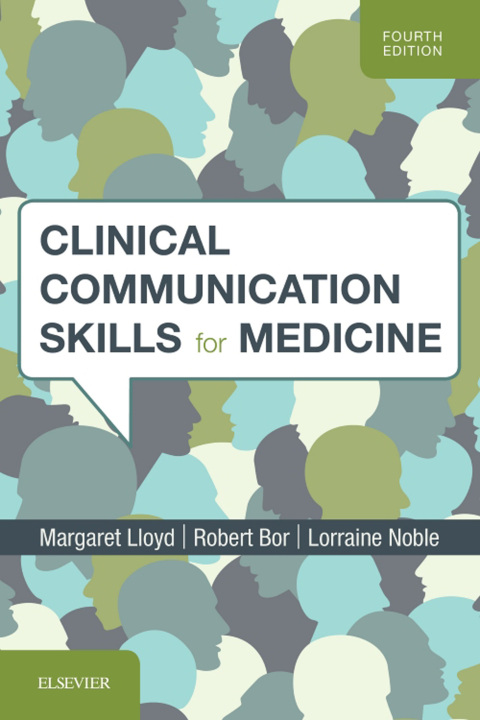Description
Efnisyfirlit
- Instructions for online access
- Cover image
- Title Page
- Table of Contents
- Copyright
- Preface to the fourth edition
- 1 Introduction
- What is clinical communication?
- What is ‘good’ communication?
- Why is communication important?
- Developing clinical communication skills
- What is the evidence for the effectiveness of clinical communication training?
- Your learning
- How to use this book
- Key points
- References
- 2 Core skills in clinical communication
- The doctor–patient relationship
- Factors that affect communication in medical settings
- The setting of the consultation
- Beginning a consultation
- The main part of the consultation
- Asking questions
- Listening
- Facilitation
- Clarification
- Reflection
- Silence
- Empathy
- Touch
- Communication during the physical examination
- Signposting
- Summarising
- Ending a consultation
- Key points
- References
- 3 Gathering information
- An overview of the doctor–patient consultation
- The medical history
- Beginning a consultation: establishing rapport
- Gathering information for a medical history
- The structure of a medical history
- Writing up the medical history
- Variations of the medical history
- Some practical hints
- Presenting a patient’s medical history
- Common concerns about meeting patients as a student
- Key points
- References
- 4 Discussing sensitive topics
- Which topics are difficult to discuss?
- Broaching a sensitive topic
- Discussing a sensitive topic
- Being aware of what the situation means for the patient
- Talking about sex
- When to talk about sex
- Key points
- References
- 5 Sharing information
- Preparing to share information
- Sharing information during the consultation
- Discussing uncertainty and risk
- Written information
- Key points
- References
- 6 Shared decision making
- Patient autonomy in decision making
- What is shared decision making?
- When is shared decision making used?
- Preparing for a decision-making consultation
- Supporting decision making during the consultation
- The importance of support
- Key points
- References
- 7 Breaking bad news
- What is bad news?
- What is difficult about sharing bad news?
- Preparing to break bad news
- Sharing bad news
- ‘What to do if…’
- Key points
- References
- 8 Communication with a patient’s family
- Initial observations
- Identifying family members
- The family’s influence on care and treatment
- Working with couples
- Confidentiality
- Secrets
- Responding to concerns and fears
- Key points for communicating with a patient’s family
- Key points
- References
- 9 Communicating with children and young people
- What to consider when communicating with children and young people
- Communication with young patients at different ages
- The physical environment
- Introductions
- Gathering information
- Examining a young patient
- Responding to a young patient’s feelings
- Involving young patients in decisions
- Reluctance to take treatment
- Separation, isolation and chronic illness
- Breaking bad news to young patients
- Key points
- References
- 10 Communicating with people from different cultural backgrounds
- When do we notice cultural differences?
- The role of culture in the doctor–patient relationship
- Exploring a person’s preferences
- Perceptions of illness, care and treatment
- Language
- Communication strategies for discussing cross-cultural issues
- Key points
- References
- 11 Diversity in communication
- Communicating with people who have a learning disability
- Communicating with transgender patients
- Communicating with older patients
- Key points
- References
- 12 Communicating about medical error
- Making mistakes in everyday life
- Mistakes in medical practice
- Causes of medical mistakes
- What should you do when you have made a mistake?
- Complaints
- Litigation
- Key points
- References
- Index






Reviews
There are no reviews yet.